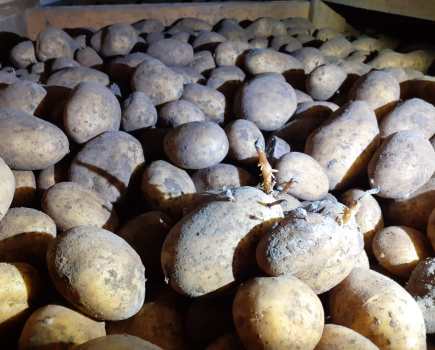With the summer event calendar in full swing and trial plots on show, seed experts give their views on new Group 3 soft wheat, Bamford.
Kate Armstrong, seed manager for Cefetra, first saw Bamford in Recommended List trials last autumn. “It’s not an exaggeration to say Bamford was the stand-out variety in last year’s trials.
“It was miles ahead of the other Group 3’s and out-performed most of the Group 4 feed varieties. There’s no doubt it’ll be at the top of most growers ‘to see’ lists.”
She says the only potential negative she can foresee is a stigma among growers regarding Group 3s. “However, if growers put that aside and focus on Bamford’s strong agronomics and marketability, then it’s a variety with a tremendous future. From a business perspective, Cefetra also sees future potential for Bamford as an export variety for autumn 2025 and beyond,” she adds.
Openfield
Openfield’s Duncan Durno believes it would be wrong to pigeonhole Bamford as a Group 3 wheat.
“With output on a par with the highest yielding Group 4 wheats, Bamford is an excellent option for any feed wheat grower. It also brings much desired improved agronomics to the soft wheat sector,” he comments.
Bamford scores a 6.7 for Septoria Tritici and offers good lodging resistance, both of which Duncan says have been lacking in some of the older varieties. “Its good grain quality, including the highest specific weight of any soft wheat, also gives growers some comfort in difficult harvests.
“However for me, it’s the marketability with potential premiums without compromising either yield or agronomics that makes Bamford a stand-out variety,” he adds.
Agrii
As for Agrii’s John Miles, he views Bamford’s arrival as a change of fortune for the Group 3 wheat sector, which he says appeared to be in terminal decline.
“It’s fair to say that Group 3 wheats were dead in the water until Bamford’s arrival. For me, the variety has redefined the landscape for soft wheats to the extent I no longer think using Group 3 or Group 4 is the right terminology anymore.
“There was always a premium for Group 3s over soft 4s – that doesn’t exist anymore. And soft 4s generally had a yield advantage over soft 3s, but that doesn’t exist anymore either. So in my head, there’s now only milling wheat, high or low quality soft wheat, and hard feed wheat.”
As a result, John believes Bamford is the catalyst which has ‘blown apart’ the traditional definitions of what a soft wheat should be. “It’s a vigorous, showy, big biomass variety but I think there’s still a story on when and when not to drill it. That’s where another Elsoms variety – Blackstone – a soft Group 4, would actually fit in very well to autumn drilling strategies.
“With its longer drilling window and the OWBM gene, Blackstone would make an excellent partner for Bamford if drilled earlier, rather than competing against it.”
Furthermore, last year, across 15 different regional Agrii trials, Bamford was the overall highest yielding wheat in both treated and untreated categories.
COFCO
Finally, Russell Frost, seed manager at COFCO International UK, believes the market has been searching for a new, true Group 3 wheat for some years so the arrival of Bamford is timely, if a little overdue.
“Not only is Bamford the best Group 3 soft wheat since the halcyon days of Consort and Riband in the 1990s, its arguably the best winter wheat on the current RL regardless of classification.
“Its strong disease profile backed by a very high untreated yield is an eye-opener, and, as the industry inevitably moves towards greater sustainability and less reliance on agrochemical inputs, I’d argue Bamford’s agronomic credentials look strong enough to deal with that sea change,” he says.
As for export opportunities, Russell points out it’s a little too early to confirm if Bamford is what the European soft wheat market wants. “But we’ll certainly know more by next year if the 2025 harvest yields a decent surplus for export,” he concludes.




